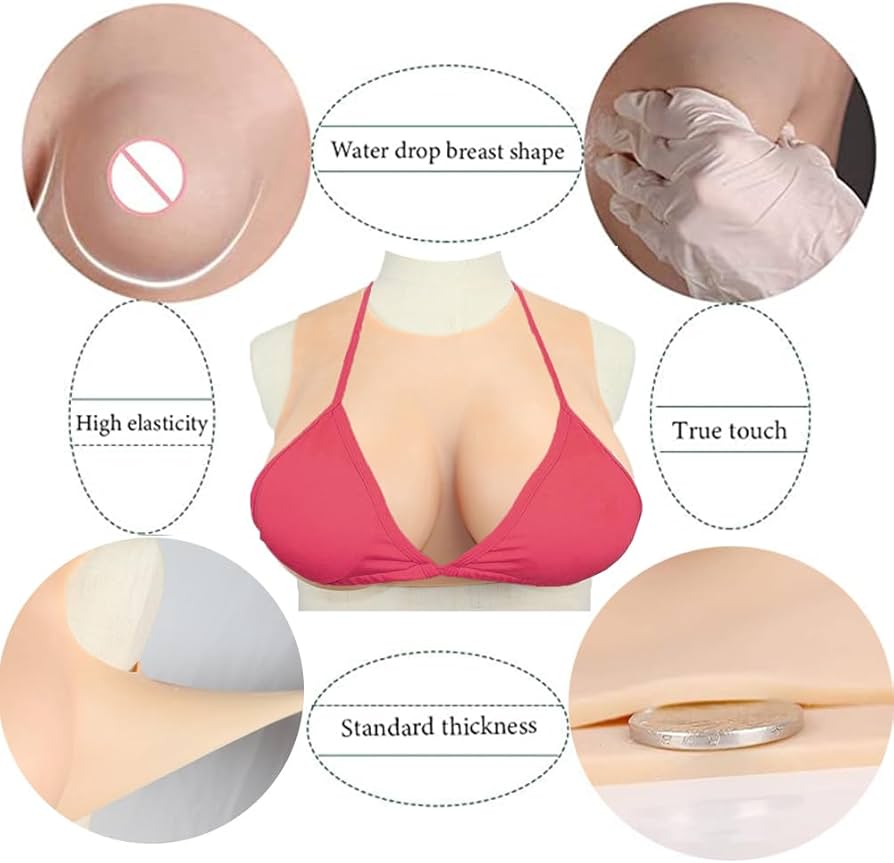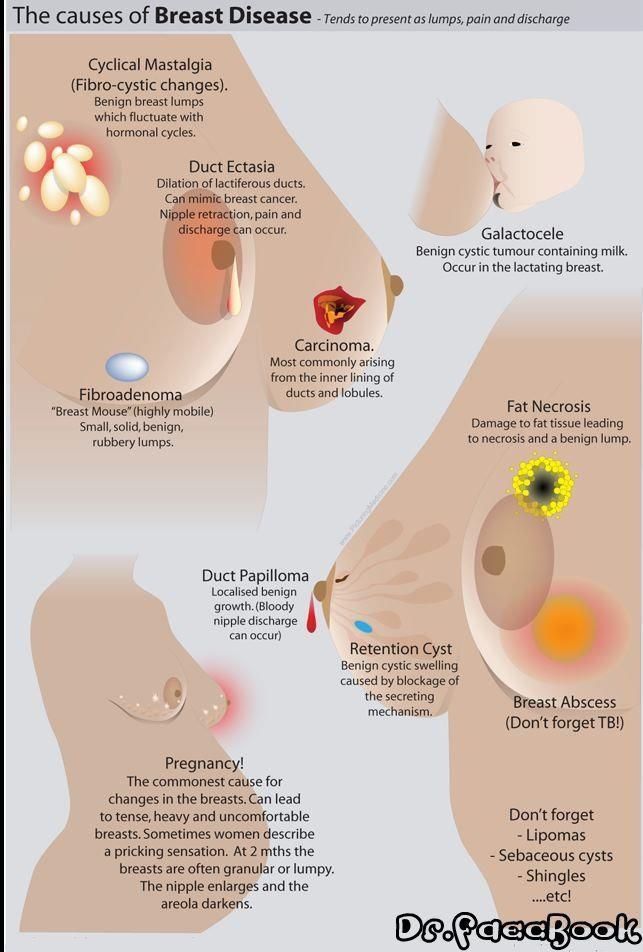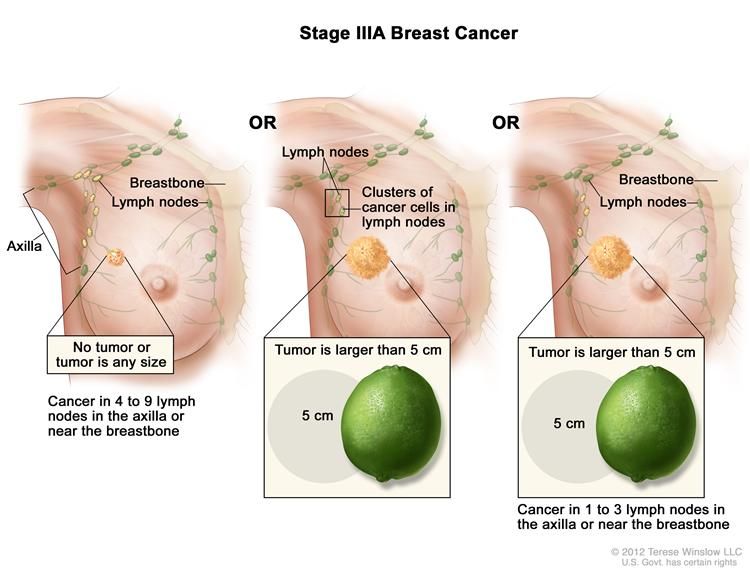Pea sized lump on breast. Pea-Sized Breast Lumps: Causes, Symptoms, and When to Seek Medical Attention
What are the common causes of pea-sized breast lumps. How can you differentiate between benign and potentially cancerous lumps. When should you consult a healthcare professional about a breast lump. What diagnostic procedures are used to evaluate breast lumps.
Understanding Breast Lumps: Types and Characteristics
Breast lumps are a common concern for many individuals, particularly women. While the discovery of a lump can be alarming, it’s crucial to understand that most breast lumps are benign (non-cancerous). However, any new or unusual changes in breast tissue should be evaluated by a healthcare professional to rule out more serious conditions.
Breast lumps can vary in size, texture, and location. They may be as small as a pea or much larger. Some lumps are soft and mobile, while others feel firm and fixed in place. The characteristics of a lump can provide clues about its nature, but only a medical examination can determine the cause with certainty.

Common Types of Benign Breast Lumps
- Cysts: Fluid-filled sacs that can feel soft or hard
- Fibroadenomas: Solid, smooth, and firm lumps that move freely
- Fat necrosis: Scar tissue that forms after breast injury or surgery
- Sclerosing adenosis: Small, firm lumps caused by excessive growth of tissue in breast lobules
Can breast lumps change over time? Yes, breast lumps can change in size and consistency, especially in response to hormonal fluctuations during the menstrual cycle. Cysts, for example, may enlarge and become more tender just before menstruation.
Cysts: A Common Cause of Breast Lumps
Breast cysts are among the most frequent causes of benign breast lumps, particularly in women between 35 and 50 years old. These fluid-filled sacs develop within breast tissue and can vary in size and texture.
Characteristics of Breast Cysts
- May feel soft or hard, depending on their location in the breast
- Can appear suddenly, sometimes seeming to develop overnight
- Often become larger and more sensitive before menstruation
- Typically benign and rarely associated with cancer
How are breast cysts diagnosed? Healthcare providers often identify cysts through physical examination, but confirmation typically involves imaging studies such as mammograms or ultrasounds. In some cases, a fine-needle aspiration may be performed to drain the fluid and confirm the diagnosis.

Fibroadenomas: Benign Breast Tumors
Fibroadenomas are another common type of benign breast lump, most frequently found in women in their 20s and 30s. These solid tumors are composed of glandular and connective tissue and have distinct characteristics that set them apart from other breast lumps.
Key Features of Fibroadenomas
- Rubbery texture and high mobility within the breast tissue
- Generally painless
- Can vary in size and may grow over time
- More common in younger women but can occur at any age
Do fibroadenomas require treatment? The management of fibroadenomas depends on various factors, including the patient’s age, the size of the lump, and individual preferences. In young women, these tumors may be monitored without immediate removal. However, surgical excision might be recommended if the fibroadenoma grows or causes discomfort.
When to Seek Medical Attention for a Breast Lump
While many breast lumps are benign, it’s essential to have any new or unusual breast changes evaluated by a healthcare professional. Early detection of breast cancer significantly improves treatment outcomes, making prompt medical attention crucial.

Signs That Warrant Immediate Medical Evaluation
- A new, hard lump or thickening in any part of the breast
- Changes in breast size, shape, or appearance
- Skin dimpling or puckering on the breast
- Nipple inversion or discharge (especially if bloody)
- Persistent breast pain or tenderness
Is breast self-examination still recommended? While formal breast self-exams are no longer universally recommended, being familiar with the normal look and feel of your breasts can help you detect changes early. Any unusual changes should be reported to your healthcare provider promptly.
Diagnostic Procedures for Breast Lumps
When a breast lump is detected, healthcare providers employ various diagnostic tools to determine its nature. The specific tests used may depend on factors such as age, medical history, and the characteristics of the lump.
Common Diagnostic Methods
- Clinical breast examination
- Mammography
- Breast ultrasound
- Magnetic Resonance Imaging (MRI)
- Fine-needle aspiration or core needle biopsy
What can you expect during a breast clinic appointment? At a breast clinic, you may undergo a combination of tests, including a physical examination, imaging studies, and possibly a biopsy. While waiting for results can be anxiety-inducing, remember that most breast lumps are non-cancerous.

Understanding Breast Cancer Risk Factors
While most breast lumps are benign, it’s important to be aware of the risk factors associated with breast cancer. Some risk factors are modifiable, while others are beyond an individual’s control.
Common Breast Cancer Risk Factors
- Age (risk increases with advancing age)
- Family history of breast cancer
- Personal history of breast cancer or certain non-cancerous breast diseases
- Inherited genetic mutations (e.g., BRCA1 and BRCA2)
- Dense breast tissue
- Early menstruation or late menopause
- Hormone replacement therapy use
- Obesity and lack of physical activity
- Alcohol consumption
Can men develop breast lumps or breast cancer? Yes, while less common, men can develop breast lumps and breast cancer. Any unusual changes in male breast tissue should be evaluated by a healthcare provider.
Lifestyle Factors and Breast Health
Maintaining overall breast health involves more than just monitoring for lumps. Certain lifestyle choices can contribute to breast health and potentially reduce the risk of developing breast cancer.

Tips for Promoting Breast Health
- Maintain a healthy weight through balanced diet and regular exercise
- Limit alcohol consumption
- Avoid or quit smoking
- Breastfeed if possible (associated with reduced breast cancer risk)
- Limit exposure to environmental toxins
- Manage stress through relaxation techniques or mindfulness practices
Does wearing a bra cause breast cancer? No, scientific evidence does not support the myth that wearing a bra increases breast cancer risk. However, wearing a properly fitted bra can enhance comfort and support.
Coping with Anxiety Related to Breast Lumps
Discovering a breast lump can be a source of significant anxiety and stress. It’s natural to feel worried, but it’s important to remember that most breast lumps are benign. Learning to manage these emotions can be beneficial for overall well-being during the diagnostic process.
Strategies for Managing Breast Lump-Related Anxiety
- Educate yourself about breast health from reliable sources
- Communicate openly with your healthcare provider
- Seek support from family, friends, or support groups
- Practice stress-reduction techniques such as deep breathing or meditation
- Focus on self-care activities that promote overall health
Is it normal to feel anxious while waiting for breast lump test results? Absolutely. Anxiety during this time is common and understandable. Don’t hesitate to reach out to your healthcare provider or a mental health professional if you’re struggling to cope with these feelings.

In conclusion, while the discovery of a breast lump can be alarming, it’s important to approach the situation calmly and methodically. Most breast lumps are benign, but prompt medical evaluation is crucial for proper diagnosis and peace of mind. By understanding the various types of breast lumps, their characteristics, and the diagnostic processes involved, individuals can be better prepared to navigate this common health concern. Remember, early detection and regular breast health monitoring are key components in maintaining overall breast health and catching any potential issues early when they are most treatable.
Breast lumps – NHS
If you feel a lump in your breast, you should always get it checked by a GP. Most breast lumps are harmless, but some can be serious.
Non-urgent advice: See a GP if you notice:
- a lump in your breast or armpit
- any other unusual changes in your breasts – such as the nipple turning inwards, dimpled skin or bloodstained nipple discharge
Changes in the breasts can be a sign of breast cancer. This is easier to treat if it’s found early.
What happens at your GP appointment
If you have a breast lump, a GP will look at and examine your breasts.
If they’re not sure what’s causing the lump, they’ll refer you to a hospital or breast clinic for further tests.
These tests usually show that a lump is not cancer.
What happens at the breast clinic
At the hospital or breast clinic, you may have a:
- breast examination
- scan – usually a breast X-ray (mammogram) or ultrasound
- biopsy – where a needle is inserted into the lump to remove some cells for testing
These tests are often done during the same visit. You’ll usually be told the results on the same day, although biopsy results take longer – you may have to wait about a week.
Treatment for a breast lump depends on the cause. Most are harmless and may go away on their own without treatment.
Information:
Breast Cancer Now has more information about what to expect at a breast clinic appointment
Causes of breast lumps
Lumps in the breasts can have lots of different causes.
They’re often caused by something harmless like a non-cancerous tissue growth (fibroadenoma) or a build-up of fluid (breast cyst).
Sometimes, a breast lump can be a sign of something serious like breast cancer.
Do not try to self-diagnose the cause of your lump – always see a GP.
Information:
Find out more
Find out more about common causes of breast lumps:
- Breast Cancer Now: fibroadenoma
- Breast Cancer Now: breast cysts
Page last reviewed: 14 July 2020
Next review due: 14 July 2023
Common Benign Lumps | Johns Hopkins Medicine
What are some common types of benign breast lumps?
There are many possible causes of non-cancerous (benign) breast lumps. Two of the most common causes of benign single breast lumps are cysts and fibroadenomas. In addition, several other conditions can present themselves as lumps, such as fat necrosis and sclerosing adenosis. Only your healthcare provider can diagnose your breast lump.
In addition, several other conditions can present themselves as lumps, such as fat necrosis and sclerosing adenosis. Only your healthcare provider can diagnose your breast lump.
What is an abscess?
A breast abscess is a pocket of pus that causes inflammation and a sore lump in the breast. Other symptoms include fever, and tiredness.
What is a cyst?
A cyst is a fluid-filled sac that develops in the breast tissue. They most often happen in women between the ages of 35 and 50 and are common in those nearing menopause. The cysts often enlarge and become sore just before your period. They may seem to appear overnight. Cysts are rarely cancerous (malignant) and may be caused by blocked breast glands.
Cysts can feel either soft or hard. When close to the surface of the breast, cysts can feel like a large blister, smooth on the outside, but fluid-filled on the inside. When they are deep in breast tissue, cysts will feel like hard lumps because they are covered with tissue.
How are cysts diagnosed and treated?
Your healthcare provider may find a cyst during a physical exam. He or she may confirm the diagnosis with a mammogram or ultrasound. You may also have a fine-needle aspiration. This involves guiding a very fine needle into the cyst and drawing fluid from it (aspiration). This also serves as the treatment for this condition. Once the fluid is aspirated, the cyst collapses and disappears. But, cysts can reappear later, in which case they are simply drained again. Cysts are seldom cancerous (malignant).
What is a fibroadenoma?
Fibroadenomas are solid, smooth, firm, noncancerous (benign) lumps that are most commonly found in women in their 20s and 30s. They are the most common benign lumps in women and can occur at any age. They are increasingly being seen in postmenopausal women who are taking hormone therapy.
The painless lump feels rubbery and moves around freely. You may find one yourself. Fibroadenomas vary in size and can grow anywhere in the breast tissue.
How are fibroadenomas diagnosed and treated?
Your healthcare provider may diagnose this type of lump simply by feeling it. But, he or she will want to confirm the diagnosis with a mammogram or ultrasound and fine-needle aspiration. Sometimes, in very young women, the fibroadenoma is not removed. However, since sometimes these tumors enlarge with pregnancy and breastfeeding, your provider may suggest having it surgically removed.
While most fibroadenomas do not lead to cancer, there is a type of fibroadenoma that has been linked to an increased risk of cancer, particularly in women with a family history of the disease.
What is fat necrosis?
Fat necrosis is a condition in which painless, round, firm lumps caused by damaged and disintegrating fatty tissues form in the breast tissue. Fat necrosis often occurs in women with very large breasts or who have had a bruise or blow to the breast. This condition may also be the result of a lumpectomy and radiation from a prior cancerous lump. In some cases, healthcare providers will watch the lump through several menstrual cycles. He or she may want to do a mammogram before deciding whether to remove it. These lumps are not cancerous and they do not increase your risk of cancer.
In some cases, healthcare providers will watch the lump through several menstrual cycles. He or she may want to do a mammogram before deciding whether to remove it. These lumps are not cancerous and they do not increase your risk of cancer.
What is galactocele (milk retention cysts)?
These are fluid-filled masses usually caused by a blocked milk duct.
What is a hematoma?
A hematoma is a blood-filled mass caused by injury or a surgical procedure of the breast.
What is sclerosing adenosis?
Sclerosing adenosis is excess growth of tissues in the breast’s lobules. This often causes breast pain. While these changes in the breast tissue are very small, they may show up on mammograms as calcifications and can make lumps. Usually a biopsy is needed to rule out cancer. In addition, because the condition can be mistaken for cancer, the lumps are usually removed through surgical biopsy.
Benign neoplasms (Fibroadenoma, Lipoma)
Benign tumors of the mammary gland are formations caused by disturbances in normal growth, cell reproduction. Benign neoplasms are characterized by slow growth, the absence of metastases and germination in surrounding tissues. Many formations found in the mammary gland are harmless, as they are considered benign tumors. However, if timely treatment is not carried out, there is a risk of degeneration into a malignant formation. Benign breast neoplasms include fibroadenoma and lipoma.
Benign neoplasms are characterized by slow growth, the absence of metastases and germination in surrounding tissues. Many formations found in the mammary gland are harmless, as they are considered benign tumors. However, if timely treatment is not carried out, there is a risk of degeneration into a malignant formation. Benign breast neoplasms include fibroadenoma and lipoma.
Fibroadenoma
Fibroadenoma is a form of benign breast lesion, often found in young women and is represented by dense, painless, easily displaced formations, the diameter of which is 2-3 cm on average. However, the size of the formations can vary from the size of a pea to the size of a lemon. These formations consist of proliferating epithelial and supporting fibrous tissues. Fibroadenoma does not change during the menstrual cycle and grows slowly.
Fibroadenoma treatment
In the presence of fibroadenomas up to 1.0 cm in size, one can turn to dynamic observation – mammography and ultrasound control. Removal of fibroadenoma is indicated in case of rapid growth of the formation, large size of the tumor, suspicion of breast cancer. Sectoral resection of the mammary gland or enucleation of fibroadenoma is performed.
Removal of fibroadenoma is indicated in case of rapid growth of the formation, large size of the tumor, suspicion of breast cancer. Sectoral resection of the mammary gland or enucleation of fibroadenoma is performed.
Lipoma
Lipoma is considered a common benign tumor consisting of mature fat cells. A lipoma can be located anywhere where there is adipose tissue, but the most common localization of lipomas is considered to be the upper outer quarter of the mammary gland. Basically, lipomas are located subcutaneously and only sometimes – in deep soft tissues (intermuscular lipomas). Lipoma may not show any symptoms for a long time, tumor growth is slow and is determined by the doctor during preventive examinations or by the woman herself during palpation of the breast. If the lipoma is located deep, it is possible to diagnose a fatty tumor only by chance during x-ray examinations or ultrasound.
Lipoma treatment
Treatment of lipoma is performed only by surgery. Surgeons make a choice in favor of removing the lipoma, as it can lead to the process of tissue necrosis and even go to the stage of cancer. The indication for surgery is the rapid growth of the tumor, the appearance of pain, the risk of degeneration into cancer.
Surgeons make a choice in favor of removing the lipoma, as it can lead to the process of tissue necrosis and even go to the stage of cancer. The indication for surgery is the rapid growth of the tumor, the appearance of pain, the risk of degeneration into cancer.
THERE ARE CONTRAINDICATIONS. YOU NEED TO CONSULT WITH A SPECIALIST
The materials posted on this page are for informational purposes and are intended for educational purposes. Site visitors should not use them as medical advice. Determining the diagnosis and choosing a treatment method remains the exclusive prerogative of your doctor!
Signs and diagnosis of breast cancer (breast)
The real way to improve the results of treatment of breast tumors is early, and in some cases, preclinical diagnosis. This problem can be solved only if complex diagnostic methods are used.
Diagnosis of breast cancer consists of two stages:
- primary
- updated diagnostics.
Primary diagnostics include self-examination of patients and individual examination by doctors of various specialties.
When studying the anamnesis, it is necessary to find out the timing of the appearance of the first signs of the disease and the rate of their development. Dishormonal hyperplasia, postpartum mastitis and trauma, primary infertility, early onset of menstruation and late onset of menopause, late onset of sexual activity and its irregularity, first birth in adulthood, aggravated heredity, gynecological diseases, hypothyroidism, obesity play a significant role in the development of breast cancer .
During self-examination and examination, attention should be paid to the symmetry, size and shape of the mammary glands, the level of standing of the nipples, deformities of the mammary gland, the condition of the skin, nipple and areola of the mammary gland. The presence of retraction of the nipple, its deformation, maceration (swelling) or erosion of the nipple and areola (with Paget’s cancer), bloody discharge from the nipple, the presence of deformation of the mammary gland, retraction of the skin in various areas of the mammary gland (“umbilization” symptom), partial or total edema skin (a symptom of “lemon” or “orange peel”), thickening of the breast tissue (infiltration) should immediately alert the patient herself or the doctor for the presence of a malignant tumor of the breast. Inspection should be carried out with the arms lowered, then with the arms abducted and arms thrown behind the head.
Inspection should be carried out with the arms lowered, then with the arms abducted and arms thrown behind the head.
Following the examination, palpation is performed, and both mammary glands should be palpated equally carefully, and not just the gland with the changes identified during the examination, since cases of bilateral mammary gland cancer are not uncommon. First, the mammary glands are felt in a standing position. They study the condition of the nipples and areolas, thickening or thickening, the presence or absence of discharge from the nipples, their nature. Particular attention should be paid to spotting from the nipple, which is a pathognomonic symptom for intraductal papilloma and breast cancer.
Carefully gathering the skin of the mammary gland into folds, the presence or absence of skin symptoms is revealed – pathological wrinkling, “platform” or umbilical. After superficial palpation, the state of the mammary glands is studied more deeply. In this case, the mammary gland tissue is sequentially captured between the fingers in all departments, and a study is also made with the fingertips. This makes it possible to identify a limited area of compaction or a tumor in the mammary gland. If a seal or tumor is detected, this area of \u200b\u200bthe mammary gland is pressed with the palm of your hand against the chest wall (it is more convenient to stand behind the patient). If the seal does not disappear, this indicates the presence of cancer or fibroadenoma (Koenig’s symptom). In the patient’s standing position, the shape, size, consistency, surface, relation of the tumor to surrounding tissues, its mobility, and pain are determined.
In this case, the mammary gland tissue is sequentially captured between the fingers in all departments, and a study is also made with the fingertips. This makes it possible to identify a limited area of compaction or a tumor in the mammary gland. If a seal or tumor is detected, this area of \u200b\u200bthe mammary gland is pressed with the palm of your hand against the chest wall (it is more convenient to stand behind the patient). If the seal does not disappear, this indicates the presence of cancer or fibroadenoma (Koenig’s symptom). In the patient’s standing position, the shape, size, consistency, surface, relation of the tumor to surrounding tissues, its mobility, and pain are determined.
After examination in a vertical position, the patient should be placed on the couch and the examination should be repeated in the supine position and on the side in the same sequence. The reduction or disappearance of a seal in the mammary gland indicates its benign nature (Koenig’s symptom). The displacement of the tumor following the nipple when sipping on the latter indicates the malignant nature of the tumor (Pribram’s symptom).
The displacement of the tumor following the nipple when sipping on the latter indicates the malignant nature of the tumor (Pribram’s symptom).
After a thorough examination of the mammary glands, regional zones (axillary, supraclavicular and subclavian areas) are examined and palpated on both sides in order to identify possible existing metastases to the lymph nodes.
In the primary diagnosis of breast cancer, several of its clinical forms should be remembered:
- nodal;
- diffuse;
- Paget’s disease.
The most common nodular form of the tumor, which can be unicentric (the presence of one node in the mammary gland) and multicentric (the presence of two or more nodes). This form is characterized by the presence of a clearly defined node (nodes) in the mammary gland, usually painless, dense texture of the tumor, limited mobility or immobility of the tumor in the mammary gland, indistinct contours of the tumor, pathological wrinkling or retraction of the skin over the tumor, determined by shifting the skin over node.
In the axillary region, on the same side, one or more dense mobile lymph nodes of a rounded shape can be palpated. In later stages, there may be retraction and fixation of the nipple, umbilization of the skin over the tumor, which is determined by eye, and lymphostasis phenomena, i.e. symptom « lemon peel » above the tumor or beyond it, ulceration or germination of the skin by the tumor, thickening of the nipple and areola folds (Krause symptom), reduction or increase in the size of the mammary gland, pulling it up, fixation to the chest wall. In this case, there may be pain in the mammary gland. In the axillary region there are large immobile lymph nodes that can merge with each other into massive conglomerates.
Diffuse cancer combines edematous-infiltrative, shell-like, erysipelatous and mastitis-like forms. These forms are characterized by the rapid development of the process both in the mammary gland itself and in the surrounding tissues, extensive lymphogenous and hematogenous metastasis, extreme malignancy, and extremely poor prognosis. Of all the diffuse forms, shell cancer is the most torpid.
Of all the diffuse forms, shell cancer is the most torpid.
Edematous infiltrative cancer occurs more often at a young age, often during pregnancy and lactation. Characterized by diffuse thickening of part, and sometimes the entire breast tissue. The skin of the mammary gland, nipple and areola are pasty and edematous, hyperemia and a symptom of “lemon peel” are expressed. An infiltrate without clear contours is palpated, occupying most or all of the mammary gland. The edema is caused by the blockade of the lymphatic tracts of the mammary gland itself by metastatic emboli or their compression by the tumor infiltrate. Edema-infiltrative cancer should be differentiated from the nodular form of breast cancer, accompanied by significant secondary lymphostasis due to metastases in regional areas.
Shell cancer is characterized by tumor infiltration of both the breast tissue itself and the skin covering it. Sometimes the process extends beyond the breast and extends to the chest wall opposite the breast. The skin becomes dense, poorly displaced, and may be pigmented. Multiple intradermal tumor nodes are characteristic, some of them may ulcerate and become covered with crusts. The mammary gland shrinks, pulls up, decreases in size.
The skin becomes dense, poorly displaced, and may be pigmented. Multiple intradermal tumor nodes are characteristic, some of them may ulcerate and become covered with crusts. The mammary gland shrinks, pulls up, decreases in size.
Erysipelas-like cancer is accompanied by severe hyperemia of the skin with uneven, tongue-like edges, which can spread to the skin of the chest wall. The skin of the gland is covered with red spots, which is due to the spread of tumor cells through the capillaries and lymphatic vessels (carcinomatous lymphangitis). More often the disease is acute, with a high temperature (39-40°C). This form of cancer is difficult to treat. An even more rapid course is characterized by a mastitis-like form of cancer, in which the mammary gland is significantly enlarged in size, tense, dense, limited mobility, hyperemia and hyperthermia of the skin are pronounced. Diffuse seals are palpated deep in the glandular tissue. The process spreads rapidly, often accompanied by fever.
Diffuse forms of cancer, especially inflammatory ones, should be differentiated from acute forms of mastitis.
Paget’s disease accounts for up to 5% of all breast cancers. Begins with redness and thickening of the nipple, the appearance of dry and weeping crusts and scabs. When they fall off, a moist, granular surface is found. The areola is slowly involved in the process. Gradually, the nipple flattens, ulcerates, the process extends beyond the areola to the skin of the mammary gland. At the same time, the tumor spreads along the ducts deep into the mammary gland. Paget’s cancer is characterized by a relatively torpid course and a relatively favorable prognosis. It should be differentiated from psoriasis or eczema of the nipple.
Thus, the primary diagnosis of clinical forms of breast cancer with careful and thorough interpretation of the identified changes allows most patients to make the correct diagnosis. However, in some cases, the correct clinical assessment of the diagnosis is difficult./armpitpainfinal-01-5c86a51446e0fb000133653f.png) In this case, instrumental and laboratory research methods come to the aid of the clinician, that is, a clarifying diagnosis is carried out.
In this case, instrumental and laboratory research methods come to the aid of the clinician, that is, a clarifying diagnosis is carried out.
One of the leading methods for diagnosing various forms of breast cancer is an X-ray examination – mammography. The study is carried out in two projections:
- straight;
- side.
Mammography distinguishes between primary and secondary signs of malignancy. The primary and main radiological signs of breast cancer are the presence of a tumor shadow and microcalcifications. The shadow of the tumor is most clearly differentiated in women of the older age group against the background of involutively altered breast tissue. The shadow of the tumor, as a rule, is irregular, stellate or amoeboid in shape, with uneven, fuzzy contours, and a characteristic radial tautness.
Very often, the tumor node is accompanied by a “ path ” to the nipple and retraction of the latter, thickening of the skin of the gland, sometimes with its retraction. However, it should be noted that some forms of limitedly growing nodular cancer (medullary, mucous) can give a rounded oval shadow on mammograms with clear, but polycyclic contours, and sometimes without them. In these cases, the differential diagnosis between cancer, fibroadenomas, and limitedly growing breast sarcomas is very difficult.
However, it should be noted that some forms of limitedly growing nodular cancer (medullary, mucous) can give a rounded oval shadow on mammograms with clear, but polycyclic contours, and sometimes without them. In these cases, the differential diagnosis between cancer, fibroadenomas, and limitedly growing breast sarcomas is very difficult.
One of the most reliable and early signs of cancer is the presence of microcalcifications, which are a reflection of salt deposits in the duct wall. Sometimes microcalcifications are the only radiological manifestation of early breast cancer. Typically, microcalcifications are small-celled (less than 1 mm in size), resembling grains of sand. The more of them and the smaller they are, the greater the likelihood of cancer. Microcalcifications can also occur in mastopathy and even in normal conditions, however, their nature differs significantly from that described above: there are few of them, they are much larger (> 3-5 mm.), More shapeless and lumpy.
Secondary (indirect) radiological signs of breast cancer include symptoms from the skin, nipple, surrounding breast tissue, increased vascularization, etc.
Despite the effectiveness of the X-ray method, the resolution of mammography in a number of patients is sharply reduced: with severe diffuse forms of mastopathy, in young patients with dense mammary glands, in the presence of implants, severe inflammatory changes, swelling of the gland and background diseases such as fibroadenomatosis. In this case, an ultrasound examination (ultrasound) of the mammary glands comes to the aid of the doctor. Ultrasound is an absolutely harmless research method, which allows it to be used repeatedly in the process of monitoring and screening.
On ultrasound, the tumor is detected as a hyperechoic zone of a rounded shape with uneven contours. However, in an independent form, ultrasound has a relatively low information content, especially with minimal tumor sizes, so it should be used in combination with other diagnostic methods, especially in young women with dense mammary glands and severe background diseases.
A highly informative and rapidly developing diagnostic method is a radioisotope examination of the mammary glands – scintimammography. With scintimammography, it is possible to identify non-palpable tumors, multicentric growth, small tumors, and it is also possible to simultaneously detect regional metastases.
Recently, the method of microwave radiothermoscanning (MW-RTS) of the mammary glands, based on the assessment of the tissue temperature gradient at a depth of 7-14 cm in the decimeter wave range, has been widely used.
The final stage of clarifying diagnosis is a morphological (cytological and / or histological) study. Morphological verification of cancer is necessary for any suspicion of a malignant process in the mammary gland. Material for cytological examination is obtained by puncture of the tumor, discharge from the nipple, scraping from the nipple in case of Paget’s cancer. In almost all clinics, histological examination most accurately verifies the true nature of the disease.
